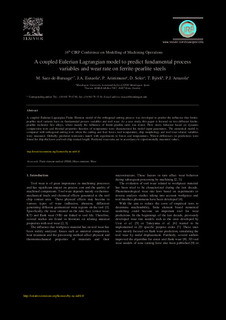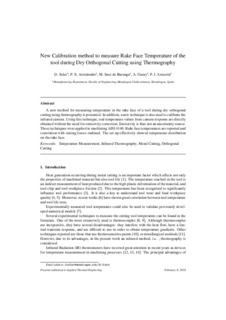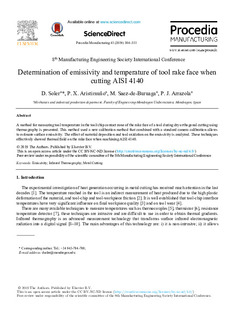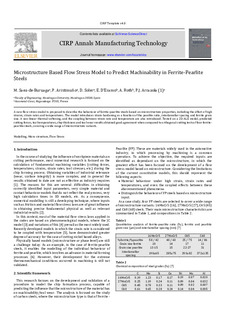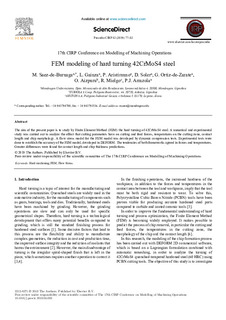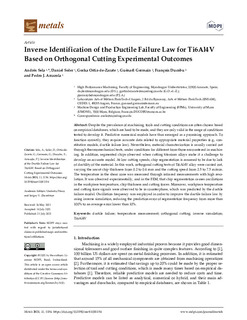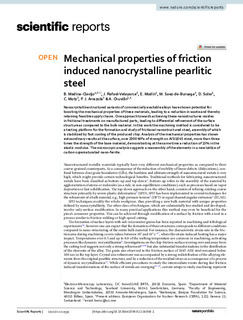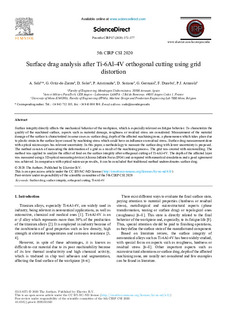Bilatu
16-tik 1-10 emaitza erakusten
A Coupled Eulerian Lagrangian Model to Predict Fundamental Process Variables and Wear Rate on Ferrite-pearlite Steels
(Elsevier B.V., 2017)
A coupled Eulerian-Lagrangian Finite Element model of the orthogonal cutting process was developed to predict the influence that ferritepearlite steel variants have on fundamental process variables and tool wear. As a case ...
New Calibration method to measure Rake Face Temperature of the tool during Dry Orthogonal Cutting using Thermography
(Elsevier Ltd., 2018)
A new method for measuring temperature in the rake face of a tool during dry orthogonal cutting using ther-
mography is presented. In addition, a new technique is also used to calibrate the infrared camera. Using ...
Determination of emissivity and temperature of tool rake face when cutting AISI 4140
(Elsevier B.V., 2019)
A method for measuring tool temperature in the tool/chip contact zone of the rake face of a tool during dry orthogonal cutting using thermography is presented. This method used a new calibration method that combined with ...
Microstructure based flow stress model to predict machinability in ferrite–pearlite steels
(Elsevier Ltd., 2019)
A new flow stress model is proposed to describe the behaviour of ferrite–pearlite steels based on microstructure properties, including the effect of high strains, strain rates and temperatures. The model introduces strain ...
FEM modeling of hard turning 42CrMoS4 steel
(Elsevier B.V., 2019)
Measurement of plastic strain and plastic strain rate during orthogonal cutting for Ti-6Al-4V
(Elsevier Ltd., 2021)
Finite Element Modelling used to predict machining outcomes needs to be supplied with the appropriate material thermomechanical properties which are obtained by specific testing devices and methodologies. However, these ...
Inverse Identification of the Ductile Failure Law for Ti6Al4V Based on Orthogonal Cutting Experimental Outcomes
(MDPI, 2021)
Despite the prevalence of machining, tools and cutting conditions are often chosen based on empirical databases, which are hard to be made, and they are only valid in the range of conditions tested to develop it. Predictive ...
Adiabatic self-heating determination for Ti6Al4V at different temperatures
(Elsevier, 2023)
Nowadays, numerical models are one of the most widely used techniques to predict material performance subjected to different manufacturing processes. However, to obtain accurate predictions, these models require reliable ...
Mechanical properties of friction induced nanocrystalline pearlitic steel
(Springer Nature, 2022)
Nanocrystalline structured variants of commercially available alloys have shown potential for boosting the mechanical properties of these materials, leading to a reduction in waste and thereby retaining feasible supply ...
Surface drag analysis after Ti-6Al-4V orthogonal cutting using grid distortion
(Elsevier Ltd, 2020)
Surface integrity directly affects the mechanical behavior of the workpiece, which is especially relevant on fatigue behavior. To characterize the quality of the machined surface, aspects such as material damage, roughness ...


